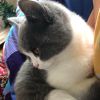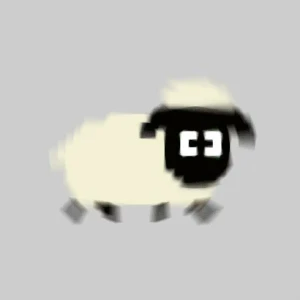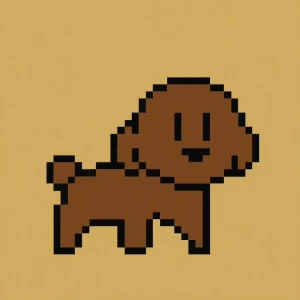 FinCloud
FinCloud
 阿啵呲嘚
阿啵呲嘚
 人类地板流精华
人类地板流精华 -
II. 笔试部分
一、英汉互译。(10分)
1.骑自行车__________________ 2. read a magazine ______________
3.集邮______________________ 4. science museum ______________
5.漫画书____________________ 5. motor cycle__________________
7.下周______________________ 8. pen pal ________ _____________
9.交通规则__________________ 10. Hong Kong _________________
二、按要求写出词语。(10分)
ride (ing形式) swim (ing形式)
have(第三人称单数) play(第三人称单数)
making (原形) making (原形)
their (同音词) right(反义词)
doesn"t (完全形式) actor (对应词)
三、连词成句。(10分)
1. father, bike, to, by, work, does, go, your
2. are, there, in, country, there, lights, every, traffic
3. your, where, mother, does, work
4. go, to, your, does, teacher, how, work, English
5. the, is, where, office, post
四、根据汉语提示完成句子,每个横线上可写多个单词。(10分)
1. I _______________(没有)an uncle. I want to have an uncle.
2. She likes __________(看) books.
3. My father often ____________(看) TV after supper.
4. Tom and Alice _____________(喜欢)listening to music.
5. How does she ___________(去) to school.
6. He __________(有) a new bicycle.
7. I"m going to _________(买) a story book.
8. It"s _____________(旁边)the hospital.
9. He dances. He is a _____________(舞蹈家).
10. She ____________(打扫)streets. She is a cleaner.
五、选择正确的答案,将字母填入题前的括号里。(10分)
( )1. Does your mother wash clothes?
A. Yes, she doesn"t. B. Yes, he does. C. No, she doesn"t.
( )2. What does Tom do?
A. Tom goes to school.
B. Tom is a boy.
C. Tom is a teacher.
( )3. How does he go to school?
A. On feet. B. By foot. C. On foot.
( )4. He likes _________. He likes _________, too.
A. make/swimming B. making/swim C. making/swim
( )5. Where is your home?.
A. It"s south of the post office.
B. I"m at home.
C. I live in the city.
( )6. ____________________________
You can go by the No. 15 bus..
A. Can I go on foot?
B. How can I get to Yongming Park?
C. Where is the Yongming Park?
( )7. Happy birthday.
__________
A. Happy birthday. B. Thank you. C. Ok.
( )8. _______________________?
I"m going to the zoo.
A. Where are you going?
B. When are you going?
C. What are you going to do?
( )9.Who are you ? ________________.
A. I"m little Water Drop.
B. Who are you?
C. I"m fine.
( )10.Where does he work?
A. He goes to work by bus.
B. He works in a hospital.
C. He can be a doctor.
六、阅读短文,判断正误:(5×2分)
This is Billy and his brother"s bedroom. It"s not very big, but it is tidy(整洁).There are two beds in the room. There is a desk between(在……中间)the beds. There are some books on the desk. . Some are English books. Some are Chinese books. There is a phone on the desk, too. There are two chairs beside the desk. One is for Billy, and the other(另一把)is for his brother. There is a map of America on the wall. There is a map of the world on the wall, too. Billy and his brother like their bedroom very much.
46. The bedroom is small, and it"s clean. ( )
47. There are two desks in the bedroom. ( )
48. There are some Chinese books on the desk. ( )
49. There are two maps on the wall. ( )
50. There isn"t a phone in the bedroom. ( )
 陶小凡
陶小凡 -
有;现在进行时态、一般过去时态、一般将来时态、一般现在进行时态。有四大时态、
 黑桃花
黑桃花 -
http://new.060s.com/article/2008/10/11/66178.htm
 wpBeta
wpBeta -
自己想
 kikcik
kikcik -
llu
 bikbok
bikbok -
12
 u投在线
u投在线 -
时态
1、一般现在时
(1)一般现在时中的be动词:
一般用原形:am is are
am用于第一人称单数(I);is用于第三人称单数(he she it和其他人名或称谓,如:Ben his sister等);are用于第二人称单数(you)和所有复数(包括第一人称复数we、第二人称复数you;第三人称复数they和其他复数,如the children 、 his parents等)。
(2)一般现在时中的动词:
第一种情况:主语是第三人称单数(he she it 和其他,如Helen 、her cousin 等),动词后一般加s或es。
第二种情况:主语不是第三人称单数,动词都用原形。
(4)一般现在时判断依据(如何判断一个句子是一般现在时):
△be动词是am、is、are
△动词用原形或加s、es
△没有时间状语或有usually、often、everyday、sometimes等不是具体的时间
2、一般过去时
(1)一般过去时中的be动词:
一般用过去式:was were
was用于第一人称单数(I)和第三人称单数(he she it和其他人名或称谓,如:Ben 、 his sister等);were用于第二人称单数(you)和所有复数(包括第一人称复数we、第二人称复数you;第三人称复数they和其他复数,如the children 、 his parents等)。
(2)一般过去时中的动词:
一般只有一种情况:+ed
这里强调一点,和一般现在时不同的是这里不管主语是第几人称,也不管是单数和复数都加ed。
(4)一般过去时判断依据(如何判断一个句子是一般过去时):
△be动词是was、were △动词加ed
△有表示过去的时间状语
现在学过的常用的表示过去的时间状语有:
just now a moment ago yesterday last week last night
last weekend last year last month three days ago two weeks ago
five years ago this morning
3、一般将来时
(1)构成形式:
Be going to +动词原形, will + 动词原形
(2)一般将来时表示动作即将发生或某人打算做某事。
(3)句中往往有tomorrow、soon、next week等词。
4、现在进行时
(1)构成形式:
Be动词+动词的ing形式
这里强调一点,两者缺少其中任何一种都不可以构成现在进行时。
(2)现在进行时表示动作正在进行或事情正在发生。
(3)有用的依据:
一个句子中既有be动词,又有动词,且动词加了ing ←→ 该句是现在进行时
(4)句中往往有now、look、listen等词。
动词过去式、现在分词的不规则变化:
be 是——was, were——being
begin 开始——began——beginning
build 建筑——built——building
buy 买——bought——buying
can 能——could——无
come 来——came——coming
copy 拷贝——copied——copying
do 做——did——doing
draw 画——drew——drawing
drink 喝——drank——drinking
drive 驾车——drove——driving
eat 吃——ate——eating
feel 感觉——felt——feeling
find 找寻——found——finding
fly飞——flew——flying
forget 忘记——forgot——forgetting
get 得到——got——getting
give 给予——gave——giving
go 去——went——going
grow 成长——grew——growing
have 有——had——having
hear 听——heard——hearing
keep 保持——kept——keeping
know 知道——knew——knowing
learn学习—learnt, learned——learning
let 让——let——letting
make 做——made——making
may 可以——might——无
mean 意思——meant-meaning
meet 见面——met——meeting
must 必须——must——无
put 放——put——putting
read 读——read——reading
ride 骑——rode——riding
ring 响——rang——ringing
run 跑——ran——running
say 说——said——saying
see 看见——saw——seeing
sing 唱歌——sang——singing
sit 坐——sat——sitting
sleep 睡觉——slept——sleeping
speak 讲话——spoke——speaking
spend 花钱——spent——spending
stand 站立——stood——standing
sweep 打扫——swept——sweeping
swim 游泳——swam——swimming
take 拿到——took——taking
teach 教——taught——teaching
tell 讲述——told——telling
think 思考——thought——thinking
will 意愿——would——无
write 写——wrote——writing
一、词类:
1、动词:行为动词、be动词、情态动词。
(1)行为动词
原形、+s/es、+ed、+ing,具体判断方法如下:
(2)be动词
a、Am--was Is --was Are--were 口诀:我用am, 你用are, is用在他她它,所有复数全用are。
b、肯定和否定句
I am (not) from London. He /She is(not) a teacher. My hair is(not) long. Her eyes are(not) small.
c、 一般疑问句 Am I …? Yes, you are. No, you aren"t. Are you/they…? Yes,we/ they are. No,we/ they aren"t. Is the cat fat? Yes, it is. No, it isn"t.
is、am、are为一类,一般用于一般现在时、现在进行时和一般将来时中。
was和were为另一类,一般用于一般过去时。
(3)情态动词
can、must、should、would、may。情态动词后动词总是用原形。(不受其他任何条件影响)
2、名词
这里强调两点:不可数名词都默认为单数,所以总是用is或者was。
如何加后缀:
a.一般情况下,直接加-s,如:book-books, bag-bags, cat-cats, bed-beds
b.以s. x. sh. ch结尾,加-es,如:bus-buses, box-boxes, brush-brushes, watch-watches
c.以“辅音字母+y”结尾,变y为i, 再加-es,如:family-families, strawberry-strawberries
d.以“f或fe”结尾,变f或fe为v, 再加-es,如:knife-knives
e.不规则名词复数: man-men, woman-women, policeman-policemen, policewoman-policewomen, mouse-mice child-children foot-feet ,.tooth-teeth fish-fish, people-people, Chinese-Chinese, Japanese-Japanese
3、形容词(包括副词)
形容词表示某一事物或的特征,副词表示某一动作的特征。
形容词和副词只有两种形式:原形和+er。
未作比较的情况下就用原形,比较时就+er。
两个重要特征:as……as中间一定用原形,有than的时候一定+er。
4、人称代词和物主代词
人称代词
物主代词
单数
复数
单数
复数
主格
宾格
主格
宾格
形容词性(短)
名词性(长)
形容词性(短)
名词性(长)
第一人称
I
me
we
us
my
mine
our
ours
第二人称
you
you
you
you
your
yours
your
yours
第三人称
he
him
they
them
his
his
their
theirs
she
her
her
hers
it
it
its
its
人称代词:
有主格和宾格之分。
一般动词前用主格,动词后用宾格。
物主代词:
有两类:形容词性物主代词(短的)和名词性物主代词(长的)
一般看后面有没有名词,如有,就用形容词性物主代词(短的);如无,就用名词性物主代词(长的)。
5、数量词
我们学过两类:基数词和序数词。基数用于表示数量多少,而基数词用于表示次序,常在日期中出现。序数词的前面一般都加the。
6、冠词
有a、an、the。a和an的区别:an用于元音音素(一般就是元音字母aeiou)前,a用于辅音音素前。
二、否定句:
be动词(am、is、are、was、were)+not、
情态动词(can、must、should)+ not、
助动词(do、does、did) + not
如何将一个肯定的陈述句改为否定句:
1、看句中有无be动词,如有,直接在be动词后+ not。
2、看句中有无情态动词,如有,直接在情态动词后+ not。
3、如上述二者都没有,就应用助动词+ not。分四个步骤:
(1)肯定陈述句中本来是没有助动词的,要加上去,位置在主语(某人或某物)后,动词前。
(2)确定助动词用do、does还是did,根据句中动词,动词是原形的助动词就用do,动词是第三人称单数的助动词就用does,动词用过去式的助动词就有did。
(3)在助动词后加not。
(4)原句中动词假如发生变化就要恢复成原形。
强调一点,有some的要考虑是否要用any。
三、一般疑问句。
如何将一个肯定的陈述句改为否定句:
1、看句中有无be动词,如有,把be动词提到句首即可。
2、看句中有无情态动词,如有,把情态动词提到句首即可。
3、如上述二者都没有,就应把助动提到句首。分四个步骤:
(1)肯定陈述句中本来是没有助动词的,要加上去,位置在主语(某人或某物)后,动词前。
(2)确定助动词用do、does还是did,根据句中动词,动词是原形的助动词就用do,动词是第三人称单数的助动词就用does,动词用过去式的助动词就有did。
(3)把助动词后提到句首。
(4)原句中动词假如发生变化就要恢复成原形。
强调一点,有some的要考虑是否要用any。
 墨然殇
墨然殇 -
动词过去式、现在分词的不规则变化:
be 是——was, were——being
begin 开始——began——beginning
build 建筑——built——building
buy 买——bought——buying
can 能——could——无
come 来——came——coming
copy 拷贝——copied——copying
do 做——did——doing
draw 画——drew——drawing
drink 喝——drank——drinking
drive 驾车——drove——driving
eat 吃——ate——eating
feel 感觉——felt——feeling
find 找寻——found——finding
fly飞——flew——flying
forget 忘记——forgot——forgetting
get 得到——got——getting
give 给予——gave——giving
go 去——went——going
grow 成长——grew——growing
have 有——had——having
hear 听——heard——hearing
keep 保持——kept——keeping
know 知道——knew——knowing
learn学习—learnt, learned——learning
let 让——let——letting
make 做——made——making
may 可以——might——无
mean 意思——meant-meaning
meet 见面——met——meeting
must 必须——must——无
put 放——put——putting
read 读——read——reading
ride 骑——rode——riding
ring 响——rang——ringing
run 跑——ran——running
say 说——said——saying
see 看见——saw——seeing
sing 唱歌——sang——singing
sit 坐——sat——sitting
sleep 睡觉——slept——sleeping
speak 讲话——spoke——speaking
spend 花钱——spent——spending
stand 站立——stood——standing
sweep 打扫——swept——sweeping
swim 游泳——swam——swimming
take 拿到——took——taking
teach 教——taught——teaching
tell 讲述——told——telling
think 思考——thought——thinking
will 意愿——would——无
 北境漫步
北境漫步 -
六年级英语语法知识汇总
一、词类:
1、动词:行为动词、be动词、情态动词。
(1)行为动词
原形、+s/es、+ed、+ing,具体判断方法如下:
(2)be动词
a、Am--was Is --was Are--were 口诀:我用am, 你用are, is用在他她它,所有复数全用are。
b、肯定和否定句
I am (not) from London. He /She is(not) a teacher. My hair is(not) long. Her eyes are(not) small.
c、 一般疑问句 Am I …? Yes, you are. No, you aren"t. Are you/they…? Yes,we/ they are. No,we/ they aren"t. Is the cat fat? Yes, it is. No, it isn"t.
is、am、are为一类,一般用于一般现在时、现在进行时和一般将来时中。
was和were为另一类,一般用于一般过去时。
(3)情态动词
can、must、should、would、may。情态动词后动词总是用原形。(不受其他任何条件影响)
2、名词
这里强调两点:不可数名词都默认为单数,所以总是用is或者was。
如何加后缀:
a.一般情况下,直接加-s,如:book-books, bag-bags, cat-cats, bed-beds
b.以s. x. sh. ch结尾,加-es,如:bus-buses, box-boxes, brush-brushes, watch-watches
c.以“辅音字母+y”结尾,变y为i, 再加-es,如:family-families, strawberry-strawberries
d.以“f或fe”结尾,变f或fe为v, 再加-es,如:knife-knives
e.不规则名词复数: man-men, woman-women, policeman-policemen, policewoman-policewomen, mouse-mice child-children foot-feet ,.tooth-teeth fish-fish, people-people, Chinese-Chinese, Japanese-Japanese
3、形容词(包括副词)
形容词表示某一事物或的特征,副词表示某一动作的特征。
形容词和副词只有两种形式:原形和+er。
未作比较的情况下就用原形,比较时就+er。
两个重要特征:as……as中间一定用原形,有than的时候一定+er。
4、人称代词和物主代词
人称代词
物主代词
单数
复数
单数
复数
主格
宾格
主格
宾格
形容词性(短)
名词性(长)
形容词性(短)
名词性(长)
第一人称
I
me
we
us
my
mine
our
ours
第二人称
you
you
you
you
your
yours
your
yours
第三人称
he
him
they
them
his
his
their
theirs
she
her
her
hers
it
it
its
its
人称代词:
有主格和宾格之分。
一般动词前用主格,动词后用宾格。
物主代词:
有两类:形容词性物主代词(短的)和名词性物主代词(长的)
一般看后面有没有名词,如有,就用形容词性物主代词(短的);如无,就用名词性物主代词(长的)。
5、数量词
我们学过两类:基数词和序数词。基数用于表示数量多少,而基数词用于表示次序,常在日期中出现。序数词的前面一般都加the。
6、冠词
有a、an、the。a和an的区别:an用于元音音素(一般就是元音字母aeiou)前,a用于辅音音素前。
二、否定句:
be动词(am、is、are、was、were)+not、
情态动词(can、must、should)+ not、
助动词(do、does、did) + not
如何将一个肯定的陈述句改为否定句:
1、看句中有无be动词,如有,直接在be动词后+ not。
2、看句中有无情态动词,如有,直接在情态动词后+ not。
3、如上述二者都没有,就应用助动词+ not。分四个步骤:
(1)肯定陈述句中本来是没有助动词的,要加上去,位置在主语(某人或某物)后,动词前。
(2)确定助动词用do、does还是did,根据句中动词,动词是原形的助动词就用do,动词是第三人称单数的助动词就用does,动词用过去式的助动词就有did。
(3)在助动词后加not。
(4)原句中动词假如发生变化就要恢复成原形。
强调一点,有some的要考虑是否要用any。
三、一般疑问句。
如何将一个肯定的陈述句改为否定句:
1、看句中有无be动词,如有,把be动词提到句首即可。
2、看句中有无情态动词,如有,把情态动词提到句首即可。
3、如上述二者都没有,就应把助动提到句首。分四个步骤:
(1)肯定陈述句中本来是没有助动词的,要加上去,位置在主语(某人或某物)后,动词前。
(2)确定助动词用do、does还是did,根据句中动词,动词是原形的助动词就用do,动词是第三人称单数的助动词就用does,动词用过去式的助动词就有did。
(3)把助动词后提到句首。
(4)原句中动词假如发生变化就要恢复成原形。
强调一点,有some的要考虑是否要用any。
四、特殊疑问句。
表示疑问,有疑问词(在开头),回答有很多种可能。
常用疑问词:
疑问词
意思
用法
When
什么时间
问时间
What time
什么时间
问具体时间,如几点钟
Who
谁
问人
Whose
谁的
问主人
Where
在哪里
问地点
Which
哪一个
问选择
Why
为什么
问原因
What
什么
问东西、事物
What colour
什么颜色
问颜色
What about
。。。。怎么样
问意见
What day
星期几
问星期几
What date
什么日期
问日期
What for
为何目的
问目的
How
。。。。怎样
问情况
How old
多大年纪
问年纪
How many
多少数量(可数名词)
问数量
How much
多少钱;多少数量(不可数名词)
问多少钱或数量(不可数)
How about
。。。。怎么样
问意见
How often
多久
问频率
How long
多长时间
问时间长度
How far
多远
问多远;多长距离
五、祈使句
表示请求或命令别人做某事或不要做某事。
肯定祈使句一定是以动词原形开头(有时有please),否定的祈使句一定是don"t加动词原形开头(有时有please)。
把祈使句改为否定句只需在动词前加don"t即可。
六、时态
1、一般现在时
(1)一般现在时中的be动词:
一般用原形:am is are
am用于第一人称单数(I);is用于第三人称单数(he she it和其他人名或称谓,如:Ben his sister等);are用于第二人称单数(you)和所有复数(包括第一人称复数we、第二人称复数you;第三人称复数they和其他复数,如the children 、 his parents等)。
(2)一般现在时中的动词:
第一种情况:主语是第三人称单数(he she it 和其他,如Helen 、her cousin 等),动词后一般加s或es。
第二种情况:主语不是第三人称单数,动词都用原形。
(4)一般现在时判断依据(如何判断一个句子是一般现在时):
△be动词是am、is、are
△动词用原形或加s、es
△没有时间状语或有usually、often、everyday、sometimes等不是具体的时间
2、一般过去时
(1)一般过去时中的be动词:
一般用过去式:was were
was用于第一人称单数(I)和第三人称单数(he she it和其他人名或称谓,如:Ben 、 his sister等);were用于第二人称单数(you)和所有复数(包括第一人称复数we、第二人称复数you;第三人称复数they和其他复数,如the children 、 his parents等)。
(2)一般过去时中的动词:
一般只有一种情况:+ed
这里强调一点,和一般现在时不同的是这里不管主语是第几人称,也不管是单数和复数都加ed。
(4)一般过去时判断依据(如何判断一个句子是一般过去时):
△be动词是was、were △动词加ed
△有表示过去的时间状语
现在学过的常用的表示过去的时间状语有:
just now a moment ago yesterday last week last night
last weekend last year last month three days ago two weeks ago
five years ago this morning
3、一般将来时
(1)构成形式:
Be going to +动词原形, will + 动词原形
(2)一般将来时表示动作即将发生或某人打算做某事。
(3)句中往往有tomorrow、soon、next week等词。
4、现在进行时
(1)构成形式:
Be动词+动词的ing形式
这里强调一点,两者缺少其中任何一种都不可以构成现在进行时。
(2)现在进行时表示动作正在进行或事情正在发生。
(3)有用的依据:
一个句子中既有be动词,又有动词,且动词加了ing ←→ 该句是现在进行时
(4)句中往往有now、look、listen等词。
动词过去式、现在分词的不规则变化:
be 是——was, were——being
begin 开始——began——beginning
build 建筑——built——building
buy 买——bought——buying
can 能——could——无
come 来——came——coming
copy 拷贝——copied——copying
do 做——did——doing
draw 画——drew——drawing
drink 喝——drank——drinking
drive 驾车——drove——driving
eat 吃——ate——eating
feel 感觉——felt——feeling
find 找寻——found——finding
fly飞——flew——flying
forget 忘记——forgot——forgetting
get 得到——got——getting
give 给予——gave——giving
go 去——went——going
grow 成长——grew——growing
have 有——had——having
hear 听——heard——hearing
keep 保持——kept——keeping
know 知道——knew——knowing
learn学习—learnt, learned——learning
let 让——let——letting
make 做——made——making
may 可以——might——无
mean 意思——meant-meaning
meet 见面——met——meeting
must 必须——must——无
put 放——put——putting
read 读——read——reading
ride 骑——rode——riding
ring 响——rang——ringing
run 跑——ran——running
say 说——said——saying
see 看见——saw——seeing
sing 唱歌——sang——singing
sit 坐——sat——sitting
sleep 睡觉——slept——sleeping
speak 讲话——spoke——speaking
spend 花钱——spent——spending
stand 站立——stood——standing
sweep 打扫——swept——sweeping
swim 游泳——swam——swimming
take 拿到——took——taking
teach 教——taught——teaching
tell 讲述——told——telling
think 思考——thought——thinking
will 意愿——would——无
write 写——wrote——writing
Words in Book 3
Class________ Name______ Number_______
window picture board door light classroom fan wall floor computer teacher"s desk many our classroom in have a look near what the we have new go where clean you see me look at seat Chinese book forty
English book math book notebook twenty-one story-book schoolbag thirty thirty-one forty-one fifty bag pencil pen
book ruler pencil-case colour fat may sure too many what"s = what is sorry heavy
here you are long hair short hair thin strong music quiet friend(s) science teacher student boy girl friend sports computer game painting is Chinese like his photo he"s=he has name he she"s =she is her you"re = you are she right bedroom living
study bathroom kitchen phone bed bed shelf fridge table home room school classroom window desk door chair sofa room it"s =it is fish hey isn"t =is not they aren"t =are not they"re =they are key look please on no open here vegetable soup dinner
fish noodles hungry knife chopsticks spoon plate beef rice bread milk egg water chicken fish fork use I"d like =I would like hungry
have dinner wait for help pass ready try help yourself show yummy food family parents uncle aunt baby sister brother father mother driver doctor farmer nurse baseball player people member only puppy come who look young
Sentences in Book 3
Class_________ Name________ Number________
1. What"s in the classroom?
2. This is Zhang Peng, our new classmate.
3. We have a new classroom.
4. Where is my seat? It is near the door.
5. Let"s clean the classroom. Good idea!
6. Let me clean the board. All right.
7. It is nice and clean! Good job!
8. What colour is the schoolbag? It‘s black and white.
9. May I have a look? Sure. Here you are.
10. My schoolbag is heavy.
11. What is in the schoolbag?
12. How many picture-books do you have?
13. My friend is strong. He has short hair….14. I have a new friend. He likes sports. She likes music.15.What"s his name ? His name is Zhang Peng. 16. What"s her name ? Her name is Amy. 17. Is this your bedroom? Yes, it is./No, it isn"t.18. I have a new eraser.19. Is she in the study? No, she isn"t. She"s in the kitchen.20. Where are the keys? They are in the door.21 Are they on the table? No, they aren"t.
22. What"s for dinner? Rice, fish and vegetables.
23. What would you like for dinner? I"d like some rice and soup.
24. Everything"s ready. Thanks /Thank you.
25. Dinner"s ready! Your forks and knives.
26. Help yourself! Thank you.
27. I can use chopsticks. Let me try.
28. Mm…Yummy, I like Chinese food. Me too.
29. We had a good time. See you tomorrow.
30. How many people are there in your family? Three.
31. Who are they? My parents and me.
 此后故乡只
此后故乡只 -
六年级英语语法知识汇总英语 2010-05-27 22:02:56 阅读15 评论0 字号:大中小
六年级英语语法知识汇总
一、词类:
1、动词:行为动词、be动词、情态动词。
(1)行为动词
原形、+s/es、+ed、+ing,具体判断方法如下:
(2)be动词
a、Am--was Is --was Are--were 口诀:我用am, 你用are, is用在他她它,所有复数全用are。
b、肯定和否定句
I am (not) from London. He /She is(not) a teacher. My hair is(not) long. Her eyes are(not) small.
c、 一般疑问句 Am I …? Yes, you are. No, you aren"t. Are you/they…? Yes,we/ they are. No,we/ they aren"t. Is the cat fat? Yes, it is. No, it isn"t.
is、am、are为一类,一般用于一般现在时、现在进行时和一般将来时中。
was和were为另一类,一般用于一般过去时。
(3)情态动词
can、must、should、would、may。情态动词后动词总是用原形。(不受其他任何条件影响)
2、名词
这里强调两点:不可数名词都默认为单数,所以总是用is或者was。
如何加后缀:
a.一般情况下,直接加-s,如:book-books, bag-bags, cat-cats, bed-beds
b.以s. x. sh. ch结尾,加-es,如:bus-buses, box-boxes, brush-brushes, watch-watches
c.以“辅音字母+y”结尾,变y为i, 再加-es,如:family-families, strawberry-strawberries
d.以“f或fe”结尾,变f或fe为v, 再加-es,如:knife-knives
e.不规则名词复数: man-men, woman-women, policeman-policemen, policewoman-policewomen, mouse-mice child-children foot-feet ,.tooth-teeth fish-fish, people-people, Chinese-Chinese, Japanese-Japanese
3、形容词(包括副词)
形容词表示某一事物或的特征,副词表示某一动作的特征。
形容词和副词只有两种形式:原形和+er。
未作比较的情况下就用原形,比较时就+er。
两个重要特征:as……as中间一定用原形,有than的时候一定+er。
4、人称代词和物主代词
人称代词
物主代词
单数
复数
单数
复数
主格
宾格
主格
宾格
形容词性(短)
名词性(长)
形容词性(短)
名词性(长)
第一人称
I
me
we
us
my
mine
our
ours
第二人称
you
you
you
you
your
yours
your
yours
第三人称
he
him
they
them
his
his
their
theirs
she
her
her
hers
it
it
its
its
人称代词:
有主格和宾格之分。
一般动词前用主格,动词后用宾格。
物主代词:
有两类:形容词性物主代词(短的)和名词性物主代词(长的)
一般看后面有没有名词,如有,就用形容词性物主代词(短的);如无,就用名词性物主代词(长的)。
5、数量词
我们学过两类:基数词和序数词。基数用于表示数量多少,而基数词用于表示次序,常在日期中出现。序数词的前面一般都加the。
6、冠词
有a、an、the。a和an的区别:an用于元音音素(一般就是元音字母aeiou)前,a用于辅音音素前。
二、否定句:
be动词(am、is、are、was、were)+not、
情态动词(can、must、should)+ not、
助动词(do、does、did) + not
如何将一个肯定的陈述句改为否定句:
1、看句中有无be动词,如有,直接在be动词后+ not。
2、看句中有无情态动词,如有,直接在情态动词后+ not。
3、如上述二者都没有,就应用助动词+ not。分四个步骤:
(1)肯定陈述句中本来是没有助动词的,要加上去,位置在主语(某人或某物)后,动词前。
(2)确定助动词用do、does还是did,根据句中动词,动词是原形的助动词就用do,动词是第三人称单数的助动词就用does,动词用过去式的助动词就有did。
(3)在助动词后加not。
(4)原句中动词假如发生变化就要恢复成原形。
强调一点,有some的要考虑是否要用any。
三、一般疑问句。
如何将一个肯定的陈述句改为否定句:
1、看句中有无be动词,如有,把be动词提到句首即可。
2、看句中有无情态动词,如有,把情态动词提到句首即可。
3、如上述二者都没有,就应把助动提到句首。分四个步骤:
(1)肯定陈述句中本来是没有助动词的,要加上去,位置在主语(某人或某物)后,动词前。
(2)确定助动词用do、does还是did,根据句中动词,动词是原形的助动词就用do,动词是第三人称单数的助动词就用does,动词用过去式的助动词就有did。
(3)把助动词后提到句首。
(4)原句中动词假如发生变化就要恢复成原形。
强调一点,有some的要考虑是否要用any。
四、特殊疑问句。
表示疑问,有疑问词(在开头),回答有很多种可能。
常用疑问词:
疑问词
意思
用法
When
什么时间
问时间
What time
什么时间
问具体时间,如几点钟
Who
谁
问人
Whose
谁的
问主人
Where
在哪里
问地点
Which
哪一个
问选择
Why
为什么
问原因
What
什么
问东西、事物
What colour
什么颜色
问颜色
What about
。。。。怎么样
问意见
What day
星期几
问星期几
What date
什么日期
问日期
What for
为何目的
问目的
How
。。。。怎样
问情况
How old
多大年纪
问年纪
How many
多少数量(可数名词)
问数量
How much
多少钱;多少数量(不可数名词)
问多少钱或数量(不可数)
How about
。。。。怎么样
问意见
How often
多久
问频率
How long
多长时间
问时间长度
How far
多远
问多远;多长距离
五、祈使句
表示请求或命令别人做某事或不要做某事。
肯定祈使句一定是以动词原形开头(有时有please),否定的祈使句一定是don"t加动词原形开头(有时有please)。
把祈使句改为否定句只需在动词前加don"t即可。
六、时态
1、一般现在时
(1)一般现在时中的be动词:
一般用原形:am is are
am用于第一人称单数(I);is用于第三人称单数(he she it和其他人名或称谓,如:Ben his sister等);are用于第二人称单数(you)和所有复数(包括第一人称复数we、第二人称复数you;第三人称复数they和其他复数,如the children 、 his parents等)。
(2)一般现在时中的动词:
第一种情况:主语是第三人称单数(he she it 和其他,如Helen 、her cousin 等),动词后一般加s或es。
第二种情况:主语不是第三人称单数,动词都用原形。
(4)一般现在时判断依据(如何判断一个句子是一般现在时):
△be动词是am、is、are
△动词用原形或加s、es
△没有时间状语或有usually、often、everyday、sometimes等不是具体的时间
2、一般过去时
(1)一般过去时中的be动词:
一般用过去式:was were
was用于第一人称单数(I)和第三人称单数(he she it和其他人名或称谓,如:Ben 、 his sister等);were用于第二人称单数(you)和所有复数(包括第一人称复数we、第二人称复数you;第三人称复数they和其他复数,如the children 、 his parents等)。
(2)一般过去时中的动词:
一般只有一种情况:+ed
这里强调一点,和一般现在时不同的是这里不管主语是第几人称,也不管是单数和复数都加ed。
(4)一般过去时判断依据(如何判断一个句子是一般过去时):
△be动词是was、were △动词加ed
△有表示过去的时间状语
现在学过的常用的表示过去的时间状语有:
just now a moment ago yesterday last week last night
last weekend last year last month three days ago two weeks ago
five years ago this morning
3、一般将来时
(1)构成形式:
Be going to +动词原形, will + 动词原形
(2)一般将来时表示动作即将发生或某人打算做某事。
(3)句中往往有tomorrow、soon、next week等词。
4、现在进行时
(1)构成形式:
Be动词+动词的ing形式
这里强调一点,两者缺少其中任何一种都不可以构成现在进行时。
(2)现在进行时表示动作正在进行或事情正在发生。
(3)有用的依据:
一个句子中既有be动词,又有动词,且动词加了ing ←→ 该句是现在进行时
(4)句中往往有now、look、listen等词。
动词过去式、现在分词的不规则变化:
be 是——was, were——being
begin 开始——began——beginning
build 建筑——built——building
buy 买——bought——buying
can 能——could——无
come 来——came——coming
copy 拷贝——copied——copying
do 做——did——doing
draw 画——drew——drawing
drink 喝——drank——drinking
drive 驾车——drove——driving
eat 吃——ate——eating
feel 感觉——felt——feeling
find 找寻——found——finding
fly飞——flew——flying
forget 忘记——forgot——forgetting
get 得到——got——getting
give 给予——gave——giving
go 去——went——going
grow 成长——grew——growing
have 有——had——having
hear 听——heard——hearing
keep 保持——kept——keeping
know 知道——knew——knowing
learn学习—learnt, learned——learning
let 让——let——letting
make 做——made——making
may 可以——might——无
mean 意思——meant-meaning
meet 见面——met——meeting
must 必须——must——无
put 放——put——putting
read 读——read——reading
ride 骑——rode——riding
ring 响——rang——ringing
run 跑——ran——running
say 说——said——saying
see 看见——saw——seeing
sing 唱歌——sang——singing
sit 坐——sat——sitting
sleep 睡觉——slept——sleeping
speak 讲话——spoke——speaking
spend 花钱——spent——spending
stand 站立——stood——standing
sweep 打扫——swept——sweeping
swim 游泳——swam——swimming
take 拿到——took——taking
teach 教——taught——teaching
tell 讲述——told——telling
think 思考——thought——thinking
will 意愿——would——无
write 写——wrote——writing
 大鱼炖火锅
大鱼炖火锅 -
小学升初中多了门英语么
farmer复数形式为
farmers2023-06-22 05:15:381
farmers 是什么意思?
农民2023-06-22 05:15:563
farmer怎么读
farmer[英]["fɑ:mu0259(r)] [美][u02c8fɑrmu025a] 生词本简明释义n.农场主,农民;承包人复数:farmers易混淆的单词:Farmer以下结果由 金山词霸 提供柯林斯高阶英汉词典 网络释义 同反义词1.N-COUNT农场主;农民A farmer is a person who owns or manages a farm.以下结果由 金山词霸 提供例句Eg. the farmer spent a day in the woods hewing timber.这个农夫花了一天时间在森林里砍木材。2023-06-22 05:16:112
农民的复数形式是( )
2023-06-22 05:16:431
farmer的英语是什么意思
农场主, A farmer is a person who owns or manages a farm.2023-06-22 05:17:154
farmer是什么意思译
farmer 英 [fɑm(r)] 美 [fɑrmr] n.农场主;农人 复数: farmers 扩展资料 例句:1、A farmer is entitled to a certain particularized tax treatment. 农民能够得到某种具体的税收待遇。 2、At first glance, organic farming looks much more expensive for the farmer. 乍一看,有机耕作对农民而言似乎花费大多了。2023-06-22 05:17:211
农民的英语是这样写的。farmer?
是的,如果复数就再加个s2023-06-22 05:17:282
Farmers与Farmer都是农民的意思? 有何不同?
你好,我回答你的问题,就是对准你那300分来的。Farmers 表示的是农民(们),就是不止一个农民,最少也是2个或以上。Farmer表示的就是农民了。一个,仅仅一个农民、他们说的单数,复数,就是这个意思。望采纳,希望一定要采纳!2023-06-22 05:18:001
the farmer 是单数还是复数
the farmer特指农民这一类人,与the old特指老人这一类人一样。但是在特定的语境中the farmer指的是某一个农民,你可以加s表示复数。如:The farmers over there are walking so fast.那些农民走得真快。希望能帮到你.....如果满意,请采纳....谢谢!2023-06-22 05:18:131
farmer是不可数名词吗?
是2023-06-22 05:18:268
农民的英语是什么?
问题一:农民用英语怎么说?? farmer 农民 问题二:农民的英文是什么? farmer 问题三:农民英语是什么 peasant 问题四:农民的英语是什么? farmer n.农场主,农民;承包人 复数:farmers 易混淆的单词:FarmerEg. the farmer spent a day in the woods hewing timber. 这个农夫花了一天时间在森林里砍木材。 问题五:农民用英语是什么? peasant 问题六:农民用英文怎么说 Farmer,Peasant, Peasantry,Agriculturist都可以,俯果楼主想来点有隐喻味道的,那就是A son of the soil,“土地的儿子”。 希望对楼主有帮助。2023-06-22 05:18:401
农民的英语单词怎么写
farmer farmer2023-06-22 05:19:0011
farmer 是什麼意思?
农民2023-06-22 05:19:325
farmer怎么读
farmer[英]["fɑ:mu0259(r)] [美][u02c8fɑrmu025a] 生词本简明释义n.农场主,农民;承包人复数:farmers易混淆的单词:Farmer以下结果由 金山词霸 提供柯林斯高阶英汉词典 网络释义 同反义词1.N-COUNT农场主;农民A farmer is a person who owns or manages a farm.2023-06-22 05:19:451
农民怎么读英语
问题一:农民英文怎么读 农民 词典 farmer; peasant; peasantry; hu *** andman; boor 问题二:农民英文怎么念? farmer 英 ["f?m?] 美 ["fm?] n. 农夫,农民 peasant 英 ["pez(?)nt] 美 ["p?znt] n. 农民;乡下人 peasantry 英 ["pez?ntr?] 美 ["p?zntri] n. 农民(总称);农民身分 boor 英 [bu0254?; b??] 美 n. 农民;粗野的人;不懂礼貌的人 hu *** andman 英 ["h?zb?n(d)m?n] 美 n. 农夫;百姓 [ 复数 hu *** andmen ] 问题三:农民用英语怎么说?? farmer 农民 问题四:农民英语怎么读,请说一下! farmer英 [?f:m?(r)] 美 [?f:rm?(r)] n.农场主,农民; 承包人; 全部释义>> [例句]A rather corpulent farmer相当富态的农场主 问题五:2004全球GDP排名? 20分 1 World $ 51,480,000,000,000 2004 est. 2 European Union $ 11,050,000,000,000 2004 est. 3 United States $ 10,990,000,000,000 2004 est. 4 China $ 6,449,000,000,000 2004 est. 5 Japan $ 3,582,000,000,000 2004 est. 6 India $ 3,033,000,000,000 2004 est. 7 Germany $ 2,271,000,000,000 2004 est. 8 United Kingdom $ 1,666,000,000,000 2004 est. 9 France $ 1,661,000,000,000 2004 est. 10 Italy $ 1,550,000,000,000 2004 est. 11 Brazil $ 1,375,000,000,000 2004 est. 12 Russia $ 1,282,000,000,000 2004 est. 13 Canada $ 958,700,000,000 2004 est. 14 Mexico $ 941,200,000,000 2004 est. 15 Spain $ 885,500,000,000 2004 est. 16 Korea, South $ 857,800,000,000 2004 est. 17 Indonesia $ 758,800,000,000 2004 est. 18 Australia $ 571,400,000,000 2004 est. 19 Taiwan $ 528,600,000,000 2004 est. 20 Iran $ 478,200,000,000 2004 est. 21 Thailand $ 477,500,000,000 2004 est. 22 Netherlands $ 461,400,000,000 2004 est. 23 Turkey $ 458,200,000,000 2004 est. 24 South Africa $ 456,700,000,000 2004 est. 25 Argentina $ 435,500,000,000 2004 est. 26 Poland $ 427,100,000,000 2004 est. 27 Philippines $ 390,700,000,000 2004 est. 28 Pakistan $ 318,000,000,000 2004 est. 29 Belgium $ 299,100,000,000 2004 est. 30 Egypt $ 295,200,000,000 2004 est. 2004年世界各国(地区)GDP总值排名(按1995年1月1日汇率) (注:此排行榜为OECD国和主要人口大国的GDP排名) 参考数据: eia.doe.gov/...b2.xls ......>> 问题六:农民 用英语翻译怎么写 朋友你好,这里要看你用在什么情况下,我给你说几种说法: 最通俗说法farmer,应该什么情况都能用 高级一点的peasant,来源主要指英国自耕农或雇农,总称的时候用peasantry 贬义说法boor,也指粗野不礼貌的人 hu *** andman,指饲养、畜牧业专家啦,有时候比较古语的用法 望采纳哦! 问题七:农民用英语单词谐音怎么读 英文原文: farmer peasant 英式音标: [?f?m?] [?pez(?)nt] 美式音标: [?fm?] [?p?znt]2023-06-22 05:20:031
农民和叔叔的英文不带了复数
farmer-- farmersuncle -- uncles2023-06-22 05:20:091
农民们正在田里工作用英文能不能不加复数?
不能农民们正在田里工作。The farmers are working in the field.2023-06-22 05:20:233
农民用英语怎么说??
Farmer,Peasant, Peasantry,Agriculturist都可以,如果楼主想来点有隐喻味道的,那就是A son of the soil,“土地的儿子”。希望对楼主有帮助。2023-06-22 05:21:368
The farmer cut the rice in autumn(一般疑问句)
问句:Do the farmers cut the rice in autumn?原文似乎farmer应该是复数farmers。2023-06-22 05:22:242
农民有最新鲜的蔬菜而且卖的最便宜用英语怎么说
The farmers" vegetables is very fresh with the most reasonable price .2023-06-22 05:22:332
俄语农民怎么说语音?
俄语的“农民”有几种说法:1、农民:крестьянство,中文谐音“科列斯基阳斯特沃”。2、(男)农民、农人:крестьянин,中文谐音:“克列斯基呀宁”。(单数,一个男农民)。3、(女)农民、农妇:крестьянка,中文谐音:“克列斯基央卡”。(单数,一个女农民)。4、农民(复数)农民们:крестьяне(男农民们) /或 крестьянки(女农民们),中文谐音:“克列斯基呀涅”/或“克列斯基央科依”。5、(男)农夫、耕者、庄稼人、种地能手:земледелец(男)/或 земледельца(女农民、女农妇),中文谐音:“泽莫列捷列茨”/或“泽莫列捷立嚓”。(本词的前半部分земле 源自俄语"земля”,中文意思是“土地、田地、土壤、地球”;后半部分“делец”是俄语的“本行能手、精通本行的人”。)6、俄语中还有一个用的较少的词,庄稼人、农场主:фермер,中文谐音:“飞勒咩叻”。2023-06-22 05:22:401
英语单词
老大,这是按字母顺序排列的,在那个书的最后面,方面便查找单词。a bowl of... 一碗… a cup of 一杯… a little 一点 ad (advertisement的缩写)广告;n.(缩)广告 afraid a.害怕的,担心的 after a.以后的;ad.以后,后来;conj.在...以后;prep.在...之后 afternoon n.下午 again ad.又,再 age n.年龄;v.(使)变老;vi.变老 all a.所有的,全部的;ad.全部,全然;int.全部,全体,一切 all right 行,好;不错 also ad.也 am a.是的;v.是 American a.美国的;n.美国人 an art.一 and conj.和;逻辑与 animal a.动物的,野兽的;n.动物 another a.另一,再一;pron.&prep.另一个 any a.任何的;ad.稍;det.一些;prep.无论哪个;pron.任何 anyway ad.不管怎样 apple n.苹果 are v.是 aren"t n.不是 arm n.手臂,袖子;v.武装,装备 ask v.问,要求 at prep.在 at home 在家 aunt n.伯母,姑,婶,姨 baby a.(形容用法)婴儿的;n.婴儿 back a.后面的;v.后退;ad.向后地;n.后背,背脊 bad a.坏的 bag n.包;v.把...装入袋中,猎杀,占有;vt.把...装进袋子 bake v.烘焙,烤 ball n.球,舞会;vt.把...捏成球状 bamboo a.用竹子制的;n.竹 be prep.是,有,在 be from 来自 because conj.因为 bed n.床;v.安置,把...栽入苗床 begin 开始 best a.最好的;ad.最好地 big a.大的 bike n.脚踏车 black a.黑色的;n.黑人,黑色;v.(使)变黑 blackboard n.黑板 blond a.金发的 blue a.蓝色的,沮丧的,忧郁的;n.蓝色 book n.书;v.登记,预订 both a.两者的;ad.两者都;int.两者 bottle n.瓶子 bowl n.碗;v.打保龄球;vt.把(球)投向球瓶 box n.盒子,箱;v.装...入盒中 boy n.男孩 bread n.面包 breakfast n.早餐;v.(吃早餐;vi.进早餐 bring v.带来 brother n.兄弟 brown a.褐色的,棕色的;n.褐色,棕色;(姓)布朗 bus n.公共汽车 but ad.仅仅,只;conj.但是;prep.除...以外 buy n.购买,买卖;v.买 bye int.再见 bye-bye 再见 cake n.蛋糕 call n.呼叫,访问,打电话;v.呼叫,访问,打电话 can v.开罐;conj.能,可以;n.罐头 Canada n.加拿大 can"t (=can+not)不能,不会 cap n.帽子,盖子;v.给戴帽,覆盖于…顶端 car n.小汽车 car n.小汽车 carry n.进位,超位;v.携带,支持,意味,搬运,拿 cat n.猫,猫科动物;(CAT)电子计算机横断层扫描 chat 聊天,闲谈;v.谈天,闲谈 cheers int.干杯 chicken n.鸡,鸡肉;胆小,害怕 china n.中国,瓷器 Chinese a.中国的;n.汉语,中国人 class n.班级,阶级,种类 classmate n.同班同学 clever a.聪明的 clothes n.衣服 coat n.外套;v.外面覆盖 color n.颜色,气色,风格;v.把...涂颜色,粉饰,脸红 come v.来 come from 来自于 come in 进来;进入 computer n.计算机 cook v.煮,烹调 cool a.凉的,凉快的,酷;ad.冷静地;n.凉快;v.使变凉 corner n.角落,转角,窘境;v.将…逼入困境,使...陷入绝境,垄断;(计算机)角点 could can 的过去式;conj.能够 cry n.叫声,哭声,大叫;v.哭,叫,喊 Cuba n.古巴 cup n.杯子;v.(使)成杯形;vt.使成杯形 cute a.可爱的,聪明的,俐伶的 dad n.爸爸 daughter n.女儿 dear a.亲爱的;int.啊,哎呀;n.亲爱的人 delicious a.可口的,美味的 desk n.书桌 different a.不同的 dinner n.主餐,晚餐,晚宴 do aux.助动词(无词意);v.干,做 doctor n.医生;v.医治 does v.做,有用,工作;conj.是,做,要 doesn"t =does+not dog n.狗,卑鄙的人;v.尾随,跟踪 dollar n.美元 double n.两倍;a.两倍的,双重的;v.加倍的,快步走,加倍努力 down a.向下的;ad.向下;n.绒毛,汗毛;prep.沿着...而下 dress n.女装,服装;v.穿著 drink n.饮料;v.喝,喝酒 drive n.驾车,快车道,推进力,驱使;v.开车,驱使,驾进力;(计算机)驱动器;n.路,街 driver n.驾驶员,司机 dumpling n.饺子 ear n.耳朵 eraser n.橡皮擦 eat v.吃 egg n.蛋;(俚语)人 eight num.八;pron.八(个,只...) eighteen num.十八 eighty num.&a.八十;pron.八十(个,只...) either a.任一,两方的;prep.任一,随便任一个;conj.或,也 elephant n.大象 eleven num.十一;pron.&a.十一(个,只...) England n.英格兰,英国 English a.英国的,英国人的;n.英语 English Corner 英语角 evening n.傍晚,晚上 every a.每,每个,每隔...的 everything pron.每件事,一切 excuse n.借口,理由;低劣的样品;v.原谅 excuse me 对不起;抱歉 eye n.眼睛;v.看,注视 face n.脸,面容;v.面对,朝,承认;(计算机)面 family a.家庭的;n.家庭 family tree 家谱 farm n.农场,农田;v.耕种 farmer n.农夫 fat a.肥胖的;n.脂肪 father n.父亲 favorite a.最喜爱的;n.最喜爱的人或物 few a.很少的,不多的,少数的;int.少数的;a.少数的 fifteen num.十五;pron.&a.十五(个,只...) fifty num.五十 film n.电影;v.把...拍成电影 find v.发现,感觉到,认为 fine n.罚款,罚金;a.美好的,好的,晴朗的,健康的;v.罚款 fish n.鱼;v.捕鱼,钓鱼 fit a.适宜的,对的,准备好的;v.适合,安装;n.适宜,发作,一阵 five num.五;pron.&a.五(个,只...) fly n.苍蝇,两翼昆虫,飞行;v.飞,飞翔,逃走 food n.食物 foot n.脚 for conj.因为;prep.给,为 for short 简称,缩写 forget v.忘记,忽略 forty num.&a.四十;pron.四十(个,只...) four num.四;pron.&a.四(个,只...) fourteen num.十四 free a.自由的,大方的,免费的;v.释放,解放;ad.自由地,免费 French a.法国(人)的,法语的;n.法语 French fries 法式炸马铃薯条,薯条 friend n.朋友 friendly a.友好的 from prep.从,从...起 fruit n.水果;v.结果实 full n.全部,十分;a.充满的,完全的,丰富的;ad.完全地,整整;(计算机)全 fun n.乐趣,玩笑,有趣的人或事物 gate n.大门 get v.得到,变成,获得,使得;(计算机)得到 get up 起床 girl n.女孩 give vi.让步,塌下,折断,弯曲;vt.给 glad a.高兴的 glove n.手套 go v.去,走;(计算机)执行 go shopping 购物 good n.善行,好处;a.好的,优良的,上等的;(pl.)商品 good afternoon 下午好 good evening 晚上好 good morning 早上好 good-bye int.再见 grade n.年级;v.(学校的)年级,成绩,分数,等级,级别;vt.分级,记成绩 grandma n.(口语)奶奶,外婆 grandpa n.(口语)爷爷,外公 grandparent n.(外)祖父(母) gray n.灰色;a.灰色的,阴沉的;v.变灰色;(计算机)灰色 green a.绿色的;n.绿色 guess n.猜测,推测,猜想;v.猜测,推测 guitar n.吉他;vi.弹吉他 hair n.头发 half a.一半的,不完全的;ad.一半地;n.半,一半 hamburger n.汉堡包 hand n.手,掌握,协助;v.支持,交给 happy a.快乐的,幸福的 has v.有,吃,让...作;conj.有 have aux.已经,曾经;n.吃,从事,得到,雇用,享有,有,允许;v.有 he pron.他 head n.头,头脑,领袖;v.为首,朝向,前进 heavy a.重的;ad.沉闷地 hello int.(见面打招呼或打电话用语)喂,哈罗 help n.帮助,援助;v.帮助 help out 帮助克服困难 help yourself 随便吃 helpful a.有帮助的,有益的 her pron.她的 here int.(用于引起注意);n.&ad.这里 here you are 给你 hers pron.她的 hey int.嗨 hi int.嗨,引人注意时的喊声,打招呼 high a.&ad.高,高度的,高级的,高尚的; High School 高中,中学 high school (美)中学,(英)公立中等学校 him pron.他(宾格) his pron.他的 home a.家(乡)的;ad.回家,在家;n.家 homework n.家庭作业 horse n.马;v.骑马 hospital n.医院 hot a.热的,热情的,辣的 house n.房子,住宅 how ad.怎样;conj.如何 How are you? 你身体好吗? how much 多少 how old 多大,多大年龄 hundred n.百,百个东西;a.百,百个 I pron.我 I am 我是... I will 我会,我喜欢 I would like 我会,我喜欢 I"d like =I would like idea n.主意,想法,观念 I"ll =I shall 我将... in prep.在,在...之内 in English 用英语(表达) is v.是 its pron.它的 It"s time to 是...的时候了。 jacket n.短上衣,茄克衫 Japan n.日本漆;亮漆;日本式漆器;日本式物品 juice n.果汁 just a.公正的,公平的;ad.正好,恰好 kid n.小孩;v.开玩笑,哄骗,嘲弄 kilo n.公斤公里之略 kind a.仁慈的,友好的;n.种类 kite n.风筝 knife n.刀;v.用刀切割,如刀割般 know v.知道,了解,认识 later a.更迟的,后面的;ad.稍后,后来 leg n.腿 let v.让,容许,使得,假设,租给 Let me see.让我想想看。 let us 让我们... let"s =let us 让我们 letter n.信,字母 like a.相似的,同样的;v.喜欢,愿意,想;prep.像,如同 lion n.狮子 list n.目录,名单,明细表;v.列出,列于表上,记入名单内 little a.小的;ad.毫不;n.几乎没有 live a.活的,生动的,精力充沛的,直播的;v.活,居住,过著 london n.伦敦 lonely a.孤独的,寂寞的,荒凉的 long a.长的,很久的,冗长的;v.渴望,热望,极想;ad.长期地 look n.看,神色,样子,脸色;v.看,看,注视 look after 照顾;照看 look at 看,朝...看 look like 看上去像 lost a.失去的,遗失的,迷惑的;v.遗失,损失,失败;vbl.遗失,损失,失败 lot ad.相当;n.许多 love n.爱,恋爱,爱情;vt.爱,热爱,喜欢 lunch n.午餐 madam n.夫人,女士 make v.做,制造,使;n.牌子,型号 man n.男人,人类,人;v.为...配备人手 many n.许多人,许多;a.许多的 map n.地图;v.映射,绘制...之地图,计划;(计算机)存储区分配图 May n.五月;aux.可能,可以,祝愿 me pron.我(宾格) meat n.肉 meet n.会,集会;a.适宜的,合适的;v.遇见,引见,对付 men n.男人,人类,男子 meow n.猫叫声;vi.猫叫 message n.消息,信息 milk n.奶,乳状物;v.挤乳,产乳 mine n.地雷,矿,矿山;pron.我的;v.采掘,开矿 miss n.小姐;vt.想念;vt.漏掉,错过 mister n.先生 mmm int.嗯 mom n.妈妈 moment n.片刻,瞬间;力矩 monkey n.猴子;v.胡闹,乱弄 more n.更多;a.多的,程度较大的,更大的;ad.多,更多,进一步; morning n.早晨,上午 mother a.出生地的;n.母亲;v.产生 mouse n.老鼠,鼠标 mouth n.嘴,开口;v.装腔作势说话,高声地说话 much a.许多的;ad.很,非常;pron.&n.许多 my pron.我的 name n.名字,名称,姓名;v.命名,称呼,任命;(计算机)名称 need n.需要,必须,缺乏;v.需要,必需;conj.需要 net n.网,净利,实价;a.净余的,纯粹的;v.用网捕,撒网,净赚 new a.新的;n.新的东西 New York n.纽约 next a.下一个的;ad.其次;n.下一个;prep.靠近 next time 下次 nice a.美好的,令人愉快的 nine num.&n.九;pron.&ad.九(个,只...) nineteen 十九 ninety num.&n.九十 no n.不,拒绝,否决票;a.没有,不是,绝非;ad.不 no problem 没问题 noodle n.面条 nose n.鼻子,突出部分,嗅觉;v.嗅到 not ad.不;(计算机)"非" not at all (用于否定)丝毫,一点,根本(不) not...at all 一点也不 now n.现在,此刻;ad.现在,立刻;conj.既然 number n.号码,数字;v.编号,加号码,总计;vi.总计;vt.编号 nurse n.护士,褓姆,奶妈;v.看护,照顾,栽培 o"clock =of the clock…点钟 office n.办公室 often ad.经常 oh int.啊呀,哦 OK a.好,不错,可以;ad.好,不错,可以 old a.旧的,老的;n.古时 on prep.在...之上;(计算机)开 one n.一;int.一,任何人;a.一,一个 only a.唯一的;ad.只,仅仅;conj.可是,不过 open n.公开,户外,空旷;a.开著的,开放的,公开的;v.打开,公开,开放 or conj.或者,还是;prep.&ad.或者 orange a.橙色的;n.橘子 order n.订单,命令;n.顺序,整齐,勋章,阶级,决议;vt.命令,调整,定购 other a.别的,其他的;pron.另一个人(或事) our pron.我们的 ours pron.我们的 out a.外面的,下台的,出局的;ad.在外,熄减,出现;prep.出外,离去,向 over a.结束的;ad.结束;prep.在...的上方;v.越过 over there 在另一边;在/往那边 pair n.双,对,副;v.使...成对 panda n.熊猫 pants n.裤子 pardon n.原谅,赦免;v.宽恕,原谅 parent n.父母,父母亲,根源 past a.过去的;ad.过;n.过去;prep.过,经过 pen n.钢笔;v.圈进 pen pal 笔友 pencil n.铅笔;v.用铅笔写 pencil-box n.铅笔盒 people n.民族,人,人们,人民;vt.居住于 pet a.宠爱的;n.宠物;vt.抚摸,轻抚 phone n.电话;v.打电话 photo n.照片 pick up 拾起;捡起 picnic n.野餐;v.(去)野餐 picture n.图画,照片,景色;v.画,描写,想像 picture n.图画,照片,景色;v.画,描写,想像 pig n.猪 place n.地方,处境,职务;v.放置,任命,安排 plan n.计划,策略,方法;v.计划,设计,意欲 plane a.平的;n.飞机,平面,刨子;v.刨 play n.游戏,游玩,剧本,比赛;v.玩,进行比赛,演奏,播放 player n.比赛者,运动员 please v.取悦,请 police a.警察的;n.警察,警方;v.管辖 poor a.可怜的,贫穷的 price n.价格,代价,价值;v.定...的价格,标价 problem a.成问题的;n.问题 quarter a.四分之一的;n.四分之一,一刻钟;vt.四等分 red a.红色的;n.红色 rice n.稻,饭,米 right a.对的,正确的;ad.对;int.好;n.权利,右;vt.纠正;adv.恰恰,正好 round n.圆,范围,巡回;a.圆的,肥胖的,完全的;v.弄圆,绕行,使...完全 ruler n.尺子;n.统治者 run over 匆匆浏览 running n.赛跑,流出,运转;a.流动的,跑著的,连续的;vbl.跑,运转,经营 salesgirl n.女售货员 salt n.盐,刺激;a.含盐的,辛辣的;v.加盐于,用盐腌 same a.同样的;ad.同样地;pron.同样的人或事 say v.说,讲 school n.学校 schoolbag n.书包 seat n.位子,席次,所在地;v.坐 section n.部分,章节,部门,路段;断面,剖面,截面;v.划分(同)divide see v.看见,看出,明白,知道 See you.再见 seldom ad.很少 set n.组合,集合,设定;n.一套,一副;v.放置,设定;v.(太阳)落下去 seven 七 seventeen 十七 seventy 七十 she pron.她 shirt n.衬衫 shoe n.鞋 shop n.商店;v.购物 short a.短的,矮的;n.短裤;adv.短暂地;突然地,急地 sing v.唱,唱歌,鸣唱 sir n.先生 sister n.姐妹 sit v.坐,坐 sit down 坐下;v.坐(下) six a.六,六个 sixteen num.十六;pron.&a.十六(个,只...) sixty 六十 skirt n.裙子;v.位于...边缘,装边于,回避;vt.绕开,位于...的边缘 sleep n.睡眠,静止,睡意;v.睡觉,睡眠,静止 small a.小的 snowman n.雪人 so ad.如此,如是,如...那样;conj.所以,因此,所以 soccer n.英式足球 sock n.短袜;v.重击,痛打 sofa n.沙发 some a.一些,少许,某一;int.一些,一部份,若干 something pron.某事(物),某东西 son n.儿子 song n.歌曲 sorry a2023-06-22 05:22:501
四年级上册英语单词表
四年级上册的英语单词表(一) Unit 1 Window(窗户) board(板) light(灯) picture(图片) door(门) floor(地板) classroom (教室) computer(电脑) teacheru2019desk(讲台) wall(墙) fan(扇子) Unit 2 bag(包) pencil(铅笔) pen(钢笔) book (书) ruler(尺子) pencil-case(铅笔盒) Unit 3 teacher(教师) student(学生) boy(男孩) girl(女孩) friend(朋友) Unit 4 home(家) room(房间) school(学校) classroom(教室) window(窗户) desk(课桌;书桌) door(门) chair(椅子) bed(床) Unit 5 rice(米饭) beef(牛肉) bread(面包) milk(牛奶) egg(蛋) water(水) chicken(鸡肉) fish(鱼) Unit 6 sister(姐妹) brother(兄弟) father(父亲;爸爸) mother(母亲;妈妈) driver(司机) doctor(医生) farmer(农民) nurse(护士) 四年级上册的英语单词表(二) Unit 1 computer(计算机) board(写字板) fan(风扇) light(灯) this(这;这个) is(是)my(我的) that(那;那个) your(你的) teacheru2019s desk(讲台) picture(图画;照片) wall(墙壁) floor(地板) yes(是;是的) it(它) Unit 2 one(一) two(二) three(三) four(四) five(五) six(六) seven(七) eight(八) nine(九) ten(十) what(什么) time(时间) itu2019s=it is ou2019clock(点钟) math(数学) Chinese(语文) English(英语) P.E.(体育) music(音乐) for(为;给) class(课程) Unit 3 jacket(夹克衫) shirt(衬衫) skirt(裙子) dress(连衣裙) T-shirt(T恤衫) red(红色的) blue(蓝色的) yellow(黄色的) green(绿色的) white(白色的) no(不;不是) not(不;不是的) colour(颜色) Unit 4 warm(暖和的) cold(寒冷的) cool(凉爽的) today(今天) jeans(牛仔裤) pants(长裤) socks(袜子) shoes(鞋子) letu2019s=let us play(玩;踢) football(足球) snowy(下雪的) sunny(晴朗的) Unit 5 how much(多少钱) big(大的) small(小的) long(长的) short(短的) apple(苹果) banana(香蕉) pear(梨) orange(橙子) watermelon(西瓜) are(是) they 它(他、她)们 Unit 6 horse(马) arenu2019t=are not cat(猫) rabbit(;兔子) pig(猪) duck(鸭子) dog(狗) eleven(十一) twelve(十二) thirteen(十三) fifteen(十五) twenty(二十) how many(多少) there(那儿;那里) 十一) twelve(十二) thirteen(十三) fifteen(十五) twenty(二十) how many(多少) there(那儿;那里) 四年级上册的英语单词表(三) Unit 1 playground 操场 garden 花园 teacheru2019s office教师办公室 library图书馆 canteen食堂 this这,这个 is 是 my 我的 that 那,那个 your 你的 art room绘画教室 computer room 计算机教室 washroom卫生间 music room音乐教室 gym体育馆 TV room 电视机房 yes是,是的 it它 Unit 2 lunch午餐 English class 英语课 music class 音乐课 breakfast早餐 dinner晚餐;正餐 P.E. class体育课 one一 two二 three三 four四 five五 six六 seven 七 eight 八 nine 九 ten 十 what 什么 time 时间 itu2019s=it is ou2019clock 点钟 get up起床 go to school 上学 go home 回家 go to bed 上床睡觉 math 数学 Chinese 语文 English 英语 P.E. 体育 music 音乐 class课程 Unit 3 jacket夹克衫 shirt 衬衫 skirt裙子 dress连衣裙 sweater毛衣 T-shirt T恤衫 red 红色的 blue 蓝色的 yellow 黄色的 green 绿色的` white 白色的 no 不;不是 not 不;不是的 jeans牛仔裤(复数) pants长裤(复数) socks袜子(复数) shoes鞋子(复数) shorts短裤(复数) colour 颜色 Unit 4 warm暖和的 cold寒冷的 cool凉爽的 hot 炎热的 weather 天气 today今天 letu2019s=let us play玩;踢 football足球 rainy下雨的 snowy下雪的 windy有风的 cloudy多云的 sunny晴朗的 Unit 5 colourful 色彩丰富的 pretty漂亮的,可爱的 cheap 便宜的 expensive昂贵的 how much 多少钱 big 大的 small 小的 long 长的 short 短的 sneakers胶底帆布鞋,网球鞋(复数) slippers拖鞋(复数) sandals凉鞋(复数) boots 靴子(复数) apple(苹果) banana(香蕉) pear(梨) orange(橙子) watermelon(西瓜) are(是) they 它(他、她)们2023-06-22 05:23:091
英语中名词什么时候用单数,什么时候用复数?
Tractors 是一类的意思, 表示一类的习惯用复数2023-06-22 05:23:174
形容词变名词10个 急~~~
act-actor wait-waiter farm-farmer sing-singer run-runner keep-keeper play-player dance-dancer jump-jumper cean-cleaner drive-driver dive-diver2023-06-22 05:23:274
英语中何时用单数表泛指某一类?何时用复数?
Tractors are useful machines for farmers. A tractor is a useful machine for a farmer.这样写也都没错啊2023-06-22 05:23:385
80%population are还是is famer(S?) two fifths of the population are还是is farmer(s)?
第一个is :population是人数,80%的人口,数目是单数概念,是number,用 is 第二个are:two fifths 五分之二,五分之二的人口,人口相当于人们people,复数概念,用are2023-06-22 05:23:541
英语可数名词和不可数名词的区别
可数名词和不可数名词的意思如下:1、可数名词是可以用来计数的名词。可数名词有单数和复数形式。如:desk-desks,apple-apples等。不可数名词是不可以直接用来计数的名词。不可数名词没有复数形式,只有单数形式。如:some bread, a little milk等。2、单数可数名词表示泛指时,前面要用不定冠词a(an),表示特指时,前面要用定冠词the; 而不可数名词前不能用a(an)修饰,表示特指时,前面一定要用定冠词the。3、可数名词和不可数名词前都可以用some,any,a lot of,lots of 等来修饰,表示“一些,许多”。4、可数名词前可用具体的数词来表示具体的数量。如:two apples, four books等。不可数名词前通常用"单位词+of"来表示数量。如: a piece of paper, three pieces of paper等。5、可数名词作主语时,谓语动词的单复数与主语的单复数保持一致。不可数名词作主语时,谓语动词要用单数形式,但是不可数名词前有复数“单位词”时,谓语动词要用复数形式。2023-06-22 05:24:022
英文说工作种类20个
关于职业的英语单词有很多,比如scientist 科学家 、detective侦探 、fisherman 渔夫 、fire fighter 消防员 、journalist 新闻记者 、lawyer 律师 、barber 理发师、singer歌手 、engineer 工程师 、hunter猎人 、worker工人 、painter画家 、writer/author 作家 、businessman 商人、pilot 飞行员、dentist牙医、nurse护士 、accountant 会计等。2023-06-22 05:24:222
are he a farmer这句话哪错了
Is he a farmer?2023-06-22 05:25:024
farmer复数?
farmer的复数是farmers,这是规则变化,直接名词后面加s就可以了2023-06-22 05:25:222
农民的英文单词怎么写
历孩2023-06-22 05:25:5910
farmer是什么意思
农民2023-06-22 05:26:395
farmer改为复数形式,怎么改,谢谢
farmers直接加s2023-06-22 05:27:192
农民英文怎么读
农民词典farmer; peasant; peasantry; husbandman; boor2023-06-22 05:27:274
farmer怎么读
farmer 英["fɑ:mu0259(r)] 美[u02c8fɑrmu025a] n. 农场主,农民;承包人 名词复数:farmers [例句]Eg. the farmer spent a day in the woods hewing timber.这个农夫花了一天时间在森林里砍木材。2023-06-22 05:27:531
农民的单词怎么读
famer音标是u02c8fɑ:mu0259(r),中文读音近似发门儿或者是peasant,音标是peznt,中文读音近似呸 人 特2023-06-22 05:28:014
farmer 的音标
fa:mu044d2023-06-22 05:28:203
farmer的复数
famers2023-06-22 05:29:141
农民用英语怎么读
1、farmer英[?fɑ?m?(r)]美[?fɑ?rm?r],n.农民; 农场主; 农人;复数:farmers。2、[例句]The bad weather is causing problems for many farmers.恶劣的天气给许多农民造成了困难。2023-06-22 05:29:201
农民的英文怎么写(复数和单数)?
单数farmer复数farmers2023-06-22 05:29:281
如何英语表达农民
1、farmer英[?fɑ?m?(r)]美[?fɑ?rm?r],n.农民; 农场主; 农人;复数:farmers。2、[例句]The bad weather is causing problems for many farmers.恶劣的天气给许多农民造成了困难。2023-06-22 05:30:071
farmer怎么读
farmer英["fɑ:mu0259(r)]美[u02c8fɑrmu025a]希望对你有所帮助。2023-06-22 05:30:182
farmer怎么读
farmer 英["fɑ:mu0259(r)]美[u02c8fɑrmu025a]n. 农场主,农民;承包人名词复数:farmers[例句]Eg. the farmer spent a day in the woods hewing timber.这个农夫花了一天时间在森林里砍木材。2023-06-22 05:30:261
Farmers与Farmer都是农民的意思? 有何不同?
你好,我回答你的问题,就是对准你那300分来的。Farmers 表示的是农民(们),就是不止一个农民,最少也是2个或以上。Farmer表示的就是农民了。一个,仅仅一个农民、他们说的单数,复数,就是这个意思。望采纳,希望一定要采纳!2023-06-22 05:30:341
big farmer什么意思
big farmer庄稼人农场主双语对照例句:1.I"ll be a big farmer before you can bat an eye! 你只要眨眨眼,我就马上变成一个富裕的庄稼人!2.A big blue ribbon ought to finally get the point through thatfarmer"s head. 让农场主夺魁一定能让他明白这个道理。2023-06-22 05:31:042
the farmer 是单数还是复数
the farmer特指农民这一类人,与the old特指老人这一类人一样. 但是在特定的语境中the farmer指的是某一个农民,你可以加s表示复数. 如:The farmers over there are walking so fast. 那些农民走得真快.2023-06-22 05:31:101
man farmer复数
men farmers2023-06-22 05:31:172
he is a farmer用复数形式改写
he is a farmer。这句话改为复数形式的话即为:They are farmers.2023-06-22 05:31:241
he is a farmer.改为复数形式
They are farmers.2023-06-22 05:31:313